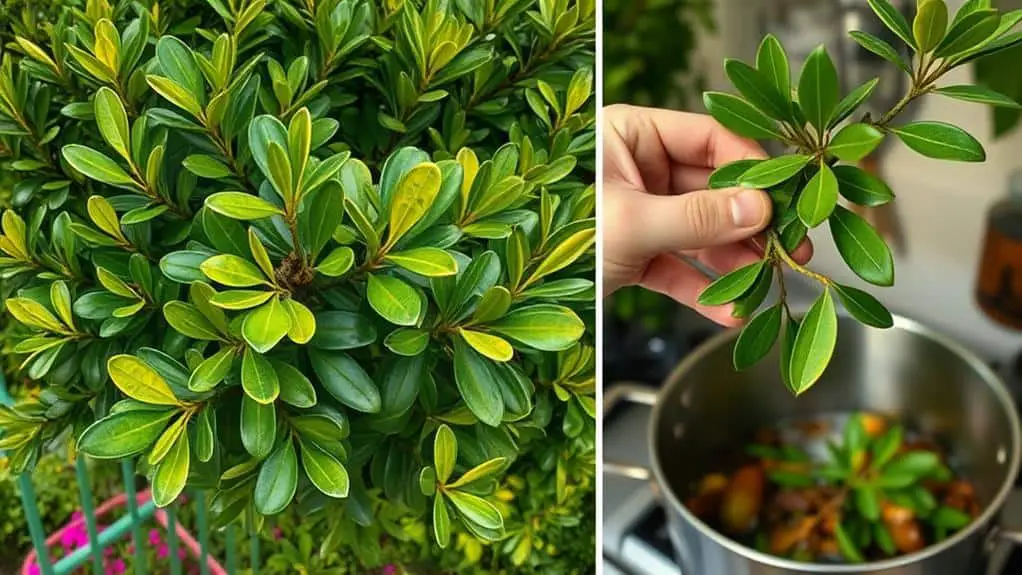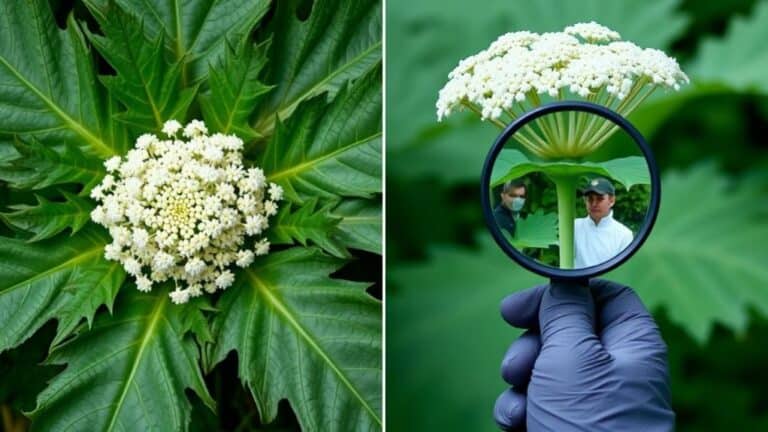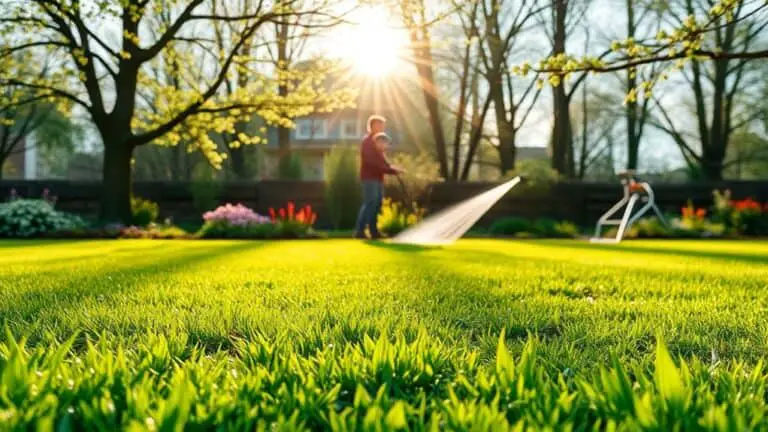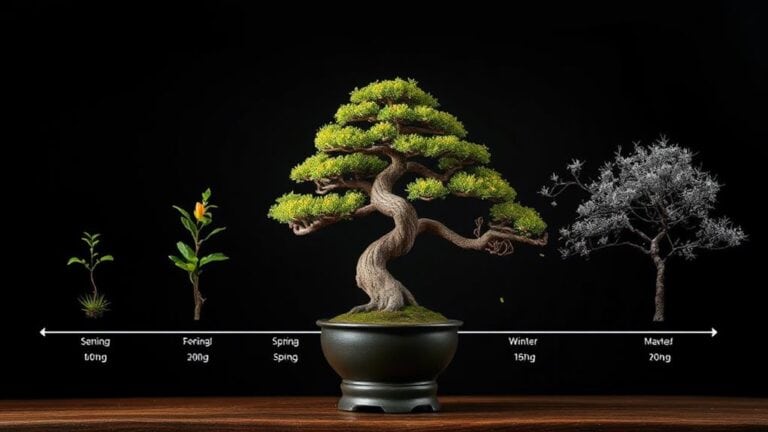How To Grow A Bay Tree Bay Tree Leaf Uses
When I first decided to grow a bay tree, I discovered that selecting the right location was essential. The tree thrives in a sunny spot with well-draining soil, enriched with compost. Planting it in spring guarantees peak growth, and it needs at least six hours of sunlight daily. Regular watering is key, allowing the topsoil to dry out between sessions. But the real allure of the bay tree is its leaves—they're not just culinary gems but also hold medicinal properties. Curious about how to maximize these benefits in your garden and kitchen? Let's explore further.
Choosing the Right Location
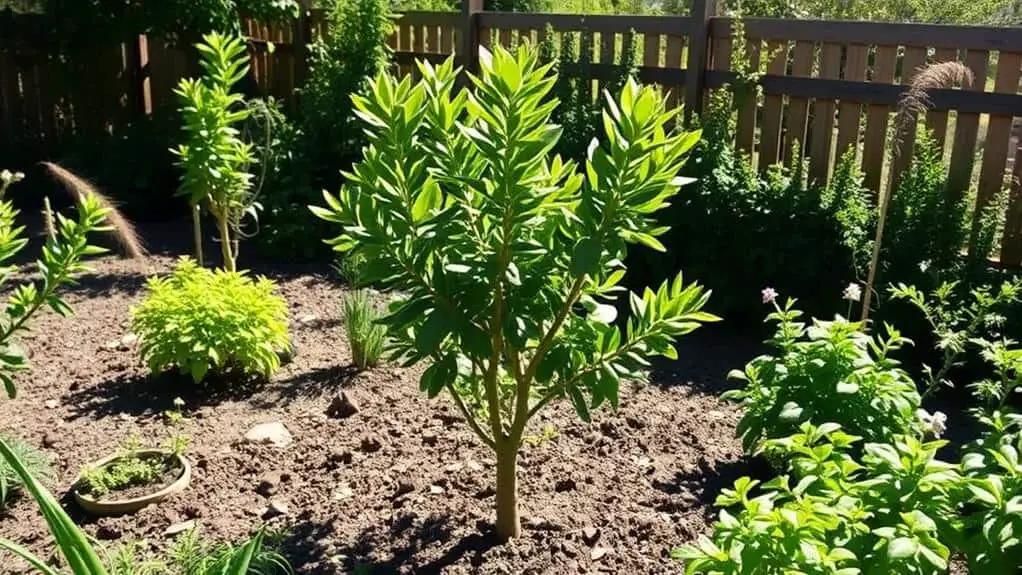
Choosing the right location for your bay tree is essential to its health and growth. First, pick a sunny location because bay trees thrive in full sun or partial shade. South or west-facing walls are perfect for maximizing sunlight exposure.
Make sure the soil is well-draining to prevent root rot; bay trees prefer fertile, fast-drying soil. Avoid low-lying areas where water can accumulate, as soggy soil can harm them.
If you live in cold climates, consider container growth so you can move the tree indoors during winter.
Remember to space bay trees adequately since they can grow quite large, reaching heights of 10-60 feet and widths of 5-20 feet.
With these tips, your bay tree will flourish!
Planting Bay Trees
After selecting the perfect spot for your bay tree, the next step is planting it properly to guarantee vigorous growth.
Choose a sunny location with well-draining soil, as bay trees thrive in full sun and don't like waterlogged conditions, which can cause root rot.
Start with an established bay plant instead of seeds, as seeds can take up to nine months to germinate.
Space your bay trees adequately, remembering they can grow very large.
Wait until spring after the last frost to plant young bay trees outdoors.
In colder climates, consider using containers. This way, you can easily move them indoors during winter to protect them from frost.
Happy planting, and enjoy your growing bay tree!
Sunlight and Light Requirements
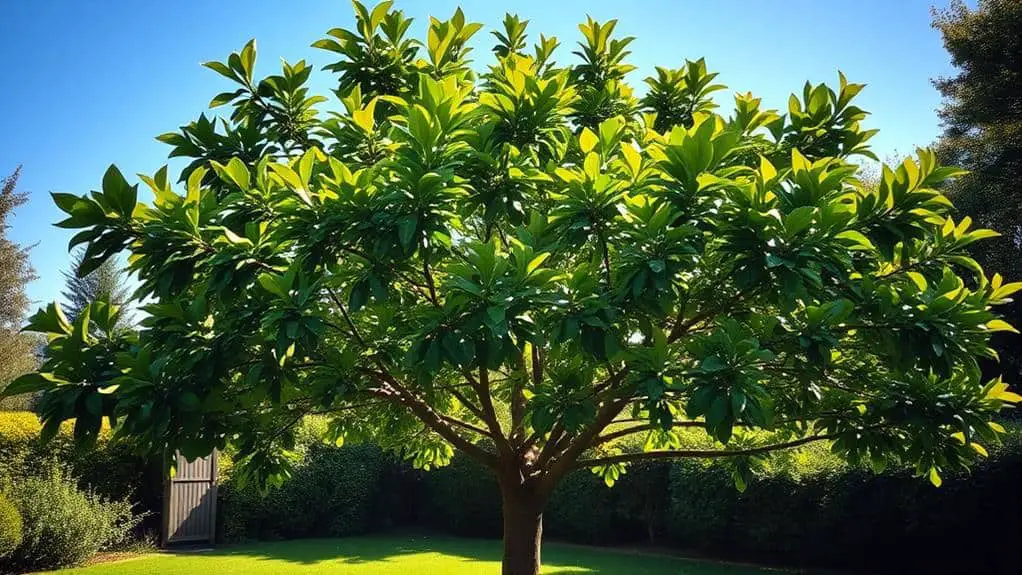
Bay trees truly flourish when they get plenty of sunlight, needing at least 6 hours of direct sun each day to grow ideally and develop flavorful leaves. They thrive best in full sun, but if you can't provide that, partial shade will do.
Just remember, not enough light can make them grow leggy and reduce leaf quality. If you're growing them indoors, place them near bright windows or patio doors. South-facing windows are perfect.
For outdoor planting, a spot near a south-facing or west-facing wall helps them absorb more sunlight and shelter from harsh winds. Young bay trees are a bit tender, so guarantee they're in a warm environment to establish and stay healthy.
Soil and Water Needs
While ensuring your bay tree gets the right amount of sunlight is essential, paying attention to its soil and water needs is equally important for healthy growth.
Bay trees thrive in well-draining soil enriched with compost and grit to prevent root rot. Water the tree when the top layer of soil is dry, keeping the soil slightly moist but not waterlogged. Overwatering can lead to yellowing leaves.
Indoor bay trees need humidity, so misting the leaves or using a wet pebble tray can help maintain moisture. Established outdoor bay trees need less frequent watering, but young ones should be watered regularly in their first year to establish strong roots.
Bay trees prefer soil with a pH between 4.5 and 8.3.
Fertilizing Your Bay Tree
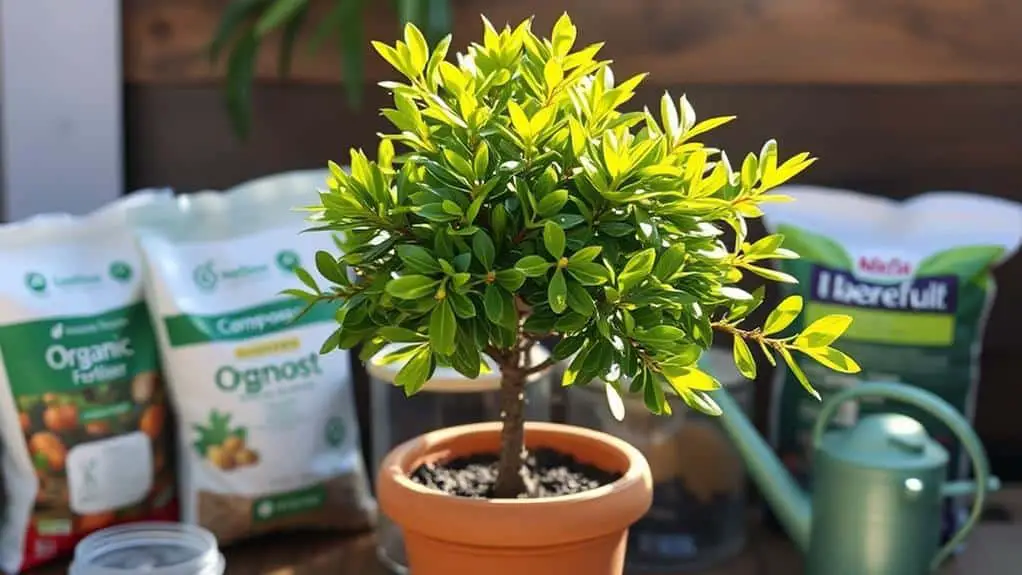
Fertilizing your bay tree is essential to secure its robust health and vigorous growth. During the growing season, apply a balanced, water-soluble fertilizer every 4-6 weeks. This regular feeding guarantees your bay tree gets the nutrients it needs.
Don't forget to add a fresh layer of compost each spring, especially for containerized trees.
Here are some tips to keep in mind:
- Use organic options like well-rotted manure or compost to enrich the soil.
- Monitor the plant's health and adjust fertilization as needed to avoid stress and leaf burn.
- Reduce or stop fertilizing during winter dormancy.
Pruning and Shaping
When it comes to pruning and shaping your bay tree, timing and technique are key.
Prune in late winter or early spring to control its size and shape, encouraging new leaf growth.
For those beautiful topiary shapes, a summer trim will help maintain a dense and ornamental appearance.
Proper Pruning Techniques
To keep your bay tree looking its best and guarantee healthy growth, it's important to master proper pruning techniques.
I always start by pruning in late winter or early spring. This helps maintain the shape and encourages new growth. For best results, use sharp secateurs instead of hedge shears to avoid damaging the plant. Regular pruning is key to a healthy bay tree.
Here's a quick guide:
- Trim any suckers from the base regularly to maintain a strong structure.
- Light pruning can be done anytime to control size, but avoid over-pruning.
- For mature trees, stagger large pruning jobs over 2-3 years to prevent stress.
Seasonal Pruning Tips
After mastering proper pruning techniques, it's equally important to understand the timing and strategy for seasonal pruning and shaping.
You should prune bay trees in late winter or early spring to promote healthy new growth and maintain an attractive shape. Young bay trees can be lightly trimmed year-round to control size.
Mature trees benefit from hard pruning every 2-3 years to rejuvenate growth. Always use sharp secateurs for clean cuts.
Regularly inspect for frost-damaged areas and prune them back in spring to encourage recovery and prevent disease spread. Limit pruning to a third of the plant at a time to preserve flavor and aroma.
Shaping for Aesthetics
Achieving an aesthetically pleasing bay tree involves thoughtful pruning and shaping practices. Pruning in late winter or early spring helps control the size and shape of your bay tree while promoting new growth.
Regular light pruning can be done any time of the year, ensuring you remove any suckers or damaged branches.
- Use secateurs for cleaner cuts, not hedge shears, to maintain leaf quality.
- Shape young trees into topiaries by trimming regularly.
- Rejuvenate older trees by cutting back hard in late spring for denser growth.
To avoid shocking your plant, stagger significant pruning over 2-3 years.
This approach not only enhances the aesthetics but also boosts the overall health of your bay tree. Happy pruning!
Harvesting Bay Leaves
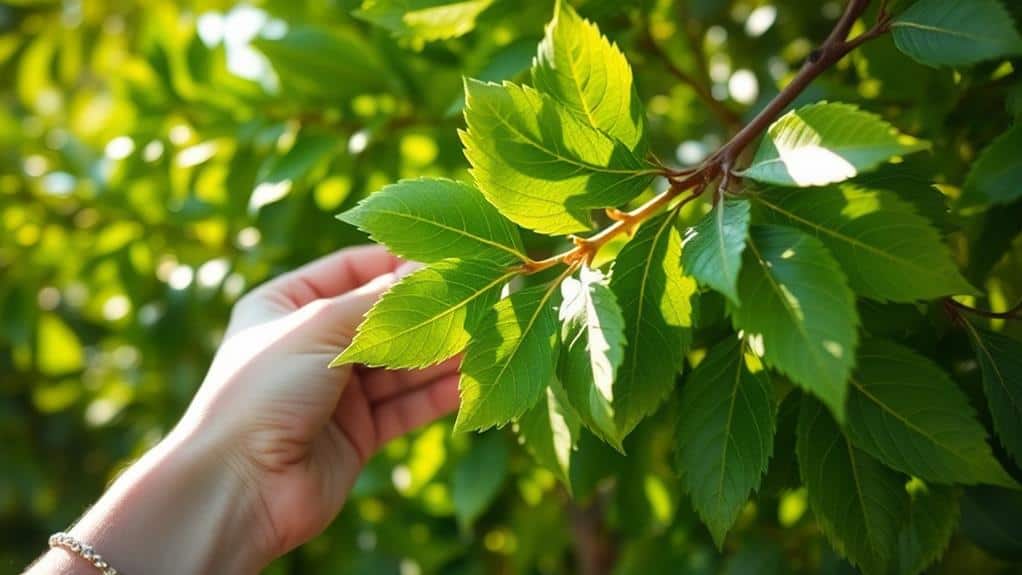
Let's talk about the best way to harvest bay leaves to keep your tree healthy and your kitchen stocked.
The leaves can be picked year-round, but you'll get the best flavor from mature ones.
Just remember to pull the leaves gently downward and never take more than a third of the plant's leaves at once.
Optimal Harvest Timing
Harvesting bay leaves at the right time can make all the difference in flavor. For the best taste, aim for the ideal harvest timing, which is just before the plant flowers, usually in late spring to early summer. This guarantees the leaves are harvested when their flavor is at its peak.
Here's a quick guide:
- Late spring to early summer: The best time to pick bay leaves.
- Harvest only a third: Taking too many leaves can stress the plant.
- Tug downward: This guarantees a clean break and minimal damage to the plant.
Proper Leaf Cutting
When you're ready to harvest bay leaves, it's crucial to guarantee you do it properly to maintain the plant's health and the leaves' flavor.
During the growing season, typically late spring to early summer, gently tug the fresh leaves downward to ensure a clean break from the stem. This method prevents damage to the plant.
Remember, only harvest up to one-third of the plant's leaves at a time, so you don't stress the plant. Fresh leaves are most flavorful when picked during this period.
If you plan to use dried bay leaves, this technique helps preserve flavor. Pay attention to your plant needs while harvesting to enjoy the best results and keep your bay tree thriving.
Drying and Storage
Drying and storing bay leaves properly guarantees you can enjoy their rich flavor long after harvesting.
To dry bay leaves, you've got two main options. You can use a dehydrator or hang them upside down in a cool, dark, and well-ventilated area. Be sure they're fully dried; they should crumble easily between your fingers.
When it comes to storage:
- Use an airtight container to keep out moisture.
- Store away from direct sunlight and heat.
- Label the container with the drying date for easy tracking.
Properly dried and stored bay leaves can last up to a year, but they're best within six months for peak freshness.
Following these steps guarantees your bay leaves retain their flavor and quality.
Managing Pests and Diseases
Bay trees, like any other plants, can fall victim to various pests and diseases that could compromise their health and growth. Scale insects and mealybugs are common pests that cause leaf discoloration and damage. Regular inspections help manage these issues. Fungal diseases like anthracnose and powdery mildew lead to browning tips and whitish residues on leaves. Applying neem oil is an effective treatment. Overwatering can cause canker diseases and wood decay, so guarantee proper soil moisture. Encouraging natural predators like ladybirds and lacewings can control pest populations.
Here's a quick reference table:
| Issue | Symptom | Management Strategy |
|---|---|---|
| Scale Insects | Leaf discoloration | Inspect regularly |
| Mealybugs | Honeydew secretion | Encourage natural predators |
| Anthracnose | Browning tips | Apply neem oil |
| Powdery Mildew | Whitish residue | Use neem oil |
| Canker Diseases | Wood decay | Avoid overwatering |
Indoor Vs. Outdoor Care

When it comes to growing bay trees, whether you keep them indoors or outdoors makes a big difference.
Indoors, bay trees need a bright, sunny spot and regular misting to keep humidity levels up, while outdoors, they thrive in well-draining soil with full sun or partial shade.
Light and Temperature Needs
Ensuring your bay tree gets the right light and temperature is essential for its healthy growth, whether you're caring for it indoors or outdoors.
The bay laurel tree thrives in a sunny spot, needing at least six hours of direct sunlight daily. However, it can tolerate light shade in hotter climates.
Temperature-wise, bay trees can handle temperatures down to -5°C if planted in the ground, but young trees need winter protection. If grown in containers, bring them indoors when it's below 10°C.
- Indoors: Place near sunny windows or patio doors.
- Outdoors: Position near south or west-facing walls.
- Humidity: Use a humidifier or mist leaves.
Don't forget to acclimatize your indoor plants gradually to outdoor conditions in spring.
Watering and Humidity Tips
Although the watering needs for bay trees differ based on whether they're grown indoors or outdoors, keeping a close eye on soil moisture is crucial.
For indoor bay trees, water them when the top layer of soil dries out. You can maintain humidity by misting the leaves or placing the pot on a wet pebble tray.
Outdoor bay trees, on the other hand, need watering based on rainfall and seasonal changes. Always guarantee the soil remains moist but not waterlogged, and plant them in well-draining soil.
Monitor moisture levels closely to avoid yellowing leaves and root problems.
In winter, move indoor bay trees to a cooler spot with bright light. Outdoor trees need frost protection and should be watered less frequently.
Uses for Bay Leaves
Bay leaves, primarily from the bay laurel, are a versatile addition to any kitchen. These aromatic leaves can transform your culinary dishes by adding a floral, eucalyptus-like flavor.
They're often used whole in soups, stews, and slow-cooked meals, but remember to remove them before serving since they're tough.
Bay leaves also have traditional medicinal applications. They can be used as a digestive aid and anti-inflammatory agent.
Plus, the dried leaves can be stored for up to a year if kept away from heat and light.
Here are some wonderful uses:
- Enhance the flavor of culinary dishes.
- Serve as a natural digestive aid.
- Act as an anti-inflammatory agent.
Frequently Asked Questions
Can You Use Bay Leaves Straight From the Tree?
Yes, you can use bay leaves straight from the tree. Fresh bay leaves offer great bay leaf benefits for flavor enhancement in culinary applications. Harvesting techniques and preservation methods guarantee their medicinal properties and gardening tips help maintain plant health.
What Can Bay Leaves Be Used For?
Bay leaves offer culinary benefits by enhancing flavor, medicinal properties for health, and aromatic qualities for homes. To preserve them, use drying techniques. They hold cultural significance too. Gardening tips? Grow them in well-drained soil and sunny spots.
How Do You Use a Bay Leaf Tree?
When I use my bay leaf tree, I enjoy its bay leaf benefits for flavor enhancement in my cooking. I follow proper harvesting techniques, apply preservation methods, and explore its medicinal properties. Gardening tips guarantee my tree thrives.
How to Grow Bay Leaves for Cooking?
To grow bay leaves for cooking, I guarantee proper bay tree care. I focus on soil requirements, sunlight needs, and pruning techniques. I manage pest control, practice seasonal maintenance, and successfully cultivate it indoors for year-round use.
Conclusion
Growing a bay tree isn't too hard, and it's really rewarding. Just pick a sunny spot, water it right, and keep an eye out for pests. Whether you're using the leaves in your cooking or for their health benefits, you'll find they're a great addition to your garden. Don't be afraid to give it a try. With a bit of care, your bay tree will thrive and provide you with wonderful, aromatic leaves. Happy gardening!

